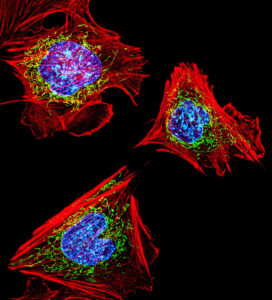
The scientific community is abuzz with reports that a few months ago, following fertility treatments in Mexico, a baby was born in New York to a Jordanian couple. Prior to the birth of this child, the couple had two children. Both suffered from Leigh syndrome, a disease resulting from mitochondrial defects that causes children to progressively lose the ability to move and breathe. One child died at age six and the other died at eight months. The couple was aware that any other children they had would have an extremely high chance of contracting the same disease. So instead they turned to a treatment that has been experimental for years but was their only hope to have a healthy child.
The birth of their healthy baby boy represents the first “three parent baby,” the first child to have been born from an egg that underwent mitochondrial transplant. In 2015, I wrote about the development of this fertility technique used to treat mitochondrial mutations, which are among the most deadly genetic disorders because the mitochondria is responsible for providing energy to cells. Any change in its function can lead to one of many different fatal diseases.
One would think that the news of this healthy birth—and the treatment of one of the world’s most deadly diseases—would be cause for a celebration within the scientific community. But the fertility technique has been controversial because it involves implanting the nucleus of a cell from the mother into the egg of a healthy donor.
A decade ago, all research involving nuclear transfers in fertility research was virtually banned in the United States. The procedure is also illegal in many nations around the world. For this reason, the fertility treatment in this case was performed in Mexico, which has once again raised questions about whether or not these treatments should be made available in the United States.
Many reproductive specialists argue that American regulations do not make any sense in this situation. Rather than making the procedure safer, they drive desperate parents to seek the procedure in countries that are far less regulated. Some also argue that the regulatory climate has ensured that no one will benefit from this procedure for years.
This regulatory disaster is a classic example of politics getting in the way of scientific progress. But hopefully, as more research is conducted and published on this healthy birth, the regulatory climate in the United States will begin to reflect that the current treatment is both safe and effective.